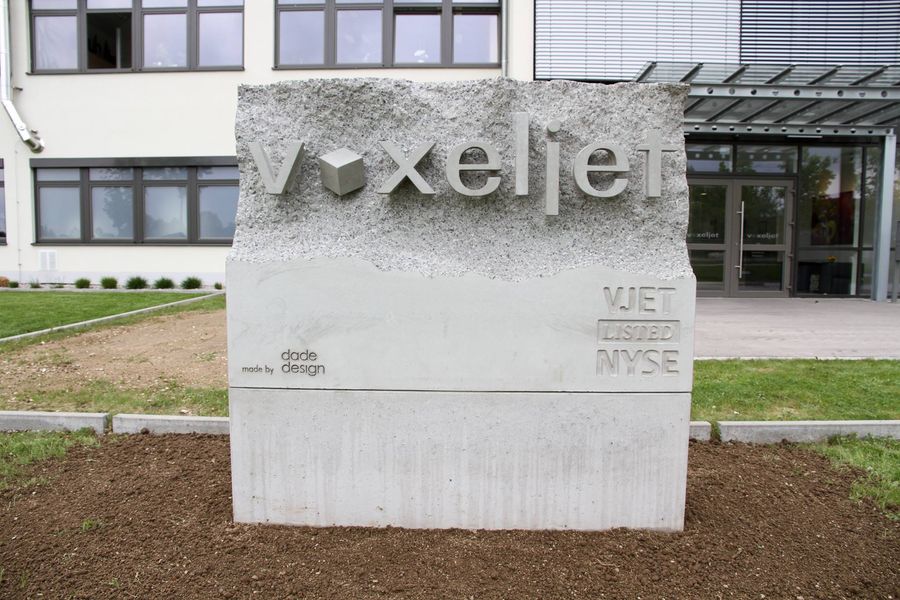In an anticipated move, voxeljet has transitioned from the Nasdaq to the Over-The-Counter (OTC) market amid the challenges reflected in its stock performance and the broader financial landscape. Furthermore, the company unveiled a summary of its earnings for the full year 2023, revealing a significant uptick in revenue. While this could be the last we hear of voxeljet’s earnings disclosures as a public firm, it still plans to release a quarterly summary to update its investors on ongoing activities and financial progress.
Turning to the financials, voxeljet reported a record 32.9% increase in total revenues for the fourth quarter of 2023, hitting €14.3 million ($15.3 million), marking a substantial climb from the previous year. This growth wasn’t just a quarterly highlight but extended through the entire year, with a 19.7% revenue increase in 2023, totaling €33.3 million ($35.7 million).
Alongside the revenue jump, voxeljet also saw a significant increase in its gross profit margin, rising to 34.7% in the fourth quarter from 26.5% year-over-year, indicating improved profitability. The revenue growth was particularly strong in its systems segment, which jumped 38.5% to €11.2 million ($12 million), highlighting the company’s main strength in 3D printer sales. Service revenue also went up by 16% to €3.1 million ($3.3 million), and the company made positive earnings before interest, taxes, depreciation, and amortization (EBITDA).
For the entire year of 2023, the German manufacturer did well financially; the company kept more money from sales, and its profit margin increased to 31.2%. Sales of 3D printers were strong, going up by 37.6% to €21.8 million ($23.4 million). However, the money made from services dropped 3.8%, ending at €11.6 million ($12.4 million).
Moreover, despite a reduction in the order backlog from €10 million ($10.7 million) in 2022 to €5.5 million ($5.9 million) in 2023, voxeljet maintains a solid pipeline, indicating sustained demand for its 3D printing systems. This year’s backlog includes eight printers, down from 11 in the previous year, but still reflects a steady interest in voxeljet’s technology. This backlog is crucial for planning production and delivery schedules, with lead times ranging between three to nine months. These numbers suggest a continuous flow of future revenues.
CEO Ingo Ederer shared that voxeljet, in collaboration with the U.S. technology investor Anzu Partners, revised and expanded their loan agreement. This deal secured around $5.5 million to support voxeljet’s day-to-day business and manage the costs of delisting from the Nasdaq and ending its U.S. Securities and Exchange Commision (SEC) reporting.
According to the executive, “Anzu partners made it clear that they will not fund expensive external advisers related to being a public listed company in the US.”
As a result, voxeljet delisted its shares from Nasdaq on March 22, 2024, and deregistered from the SEC reporting obligations on April 1. Following the delisting, voxeljet shears began trading in the OTC market (OTCMKTS) under the ticker symbol “VJTTY.” Although anticipated, the transition from “Nasdaq: VJET” to “OTCMKTS: VJTTY” is a crucial change in voxeljet’s market presence, especially for a company that was one of the pioneers in the 3D printing industry, having gone public in October 2013 and maintained its public status for a decade.
Looking at voxeljet’s stock price throughout this time, the trajectory has been downward, with the stock plummeting from its peak of $294.95 in November 2013 to under $1 by March 2024. Unfortunately, the stock continued its fall, reaching its lowest point of $0.45, and the delisting was imminent.
Nonetheless, this delisting move could lead to better operational flexibility, giving the company more room to breathe without the constant pressures from the stock market. With less focus on short-term market expectations, voxeljet might now have a better chance to focus on what it does best: innovating in 3D printing technology and strengthening its place in the industry. In the end, voxeljet’s focus on its core 3D printing technology could be the silver lining amid these challenges. With the industry’s potential still high, a new focus could lead to new market opportunities.
Going forward, a post-delisted voxeljet could take different roads. For example, a restructuring and strategic focus might pave the way for either thriving in the private domain or even a relisting. Whatever route voxeljet decides to take, its ability to leverage its technological backbone and adapt to new market demands will be key in navigating its post-delisting landscape.
